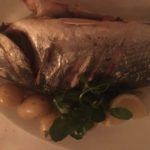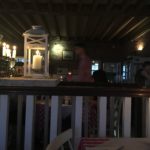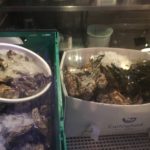If you judge by the number of surveys asking how likely you are to recommend restaurant X, word of mouth is vital to eateries – particularly chains that apparently care more about marketing than food or service. “Perception is reality,” as the saying goes, so it wouldn’t matter how warped the opinion, it can materially affect your footfall and bookings.
Imagine this then: The Whitstable Oyster Fishery Company had at one time a wonderful reputation. I once took the family there and enjoyed a very decent lunch. But in recent years, I’ve heard that this once iconic fish restaurant has gone downhill and that there are many better places to eat seafood in the charming Kentish seaside town of Whitstable.
Were it one friend I’d have probably dismissed this as prejudicial or evidence only of a bad night, and we all get bad nights occasionally. But no, several friends told me the same thing: the Oyster Company ain’t what it was, try someplace else – such as the Lobster Shack, the Crab and Winkle and many more.
Most people would probably leave it at that and not go, but your intrepid reporter trusts only his own senses. So it was that my partner and I booked a night nearby and a table at the WOFC to find the truth for ourselves.
First thing to note is that the restaurant is housed in a gorgeous old building, replete with beams and situated in a perfect location near the sea. The restaurant’s website has a “heritage” page that explains the history, copied below this review from interest. Current owners are Richard Green and Angharad Renshaw-Green, Richard having taken over the business with his brother James in 1978, which in the world of restaurants represents long-standing continuity.
The decor is comforting – a hint of the twee fisherman’s seaside memorabilia but not overdoing it. The entrance lobby is dominated by a large refrigerated counter displaying the wares, including oysters and lobsters, plus a young sous chef on shucking duty. Let’s face it, this is what you want to see, so only right and proper that they are there to be seen – much as the Company Shed has a large trolley with curtains, hiding live crabs and lobsters.
The dining area is deceptively large, consisting of at least two rooms, possibly more. We were seated in a pleasant central area with fine views around the room, though sadly it was impossible to read the blackboards on the far wall by candle and lamp-light. Thankfully an enthusiastic waitress brought the menus anyway, so maybe the blackboard writing was in vain.
The menu is straight to the point, though subtly different to that displayed on the website. Starters include oysters and a who’s who among the usual suspects of small fish and shellfish – with one exception.
Razor clams are not a common sight, even on the menus of seafood restaurants, and with good reason: the reason they are expensive is because someone will have been up at the crack of dawn to pick these delicate creatures from their hiding place beneath the sodden sands: free to collect but priced in accordance with the manual effort. They are washed, cooked with garlic butter and served simply in their elongated shells that do indeed look like a cut-throat ready to slash your neck. Razor clams are one of those foods noted as much for their texture (rubbery unless in good hands, the perfect combination of chewy and forgiving here) and flavour – a buttery, salty clam that made for a blissful shared starter.
For mains she went for the traditional (£17 worth of battered cod and chips with mushy peas), which she declared to be the best fish and chips she ever tasted: cue my story of favourite chippies found in a housing estate in Slough and on Mill Hill Broadway, but sadly long gone. I was less convinced by her chips, though the beer-battered cod was undeniably excellent. The peas were more akin to pureed (see a similar recipe here), though the lady approved. We shared a leaf and fine bean salad.
Meanwhile, I headed in the direction of fish cooked on the bone for the second time in short measure (see my review of dover sole meunière from Smiths here.) In this case it was gilt-head bream, simply slashed, salted, oiled and roasted with more of that garlic butter, then served with new potatoes, watercress and a perfunctory segment of lemon. The gilt-head is said by some to be the best tasting of the bream species; that may be so, and in this case it was very fresh and cooked to creamy perfection, all the better to show it up in the best light.
It was done well in its plain simplicity but with the benefit of hindsight I might have chosen a different main – and the only reason I didn’t have lobster was that it was only offered cold with a herb and potato salad when what I fancied was thermidor or, at the risk of sounding like a broken record, grilled with herb and garlic butter.
Now here’s a strange thing. You might suppose the highlight of eating at a fresh fish restaurant would be the fish? Not so. The lady enjoyed panna cotta with al dente rhubarb for her dessert, but even that paled into insignificance compared to my roasted pineapple with coconut ice cream. The pineapple simply oozed succulence and rich fruity flavours. Rarely can you say a common item of produce can prove a total revelation, but this was it – though probably not local, even in Kent!
Cut a long story short, we had a good meal at £90-odd. Not especially overpriced against the standards of seafood restaurants, certainly well short of London prices. So this prompts the question of why friends thought WOFC was heading perilously downhill? Clearly the locals did not agree, since the place was packed to the gunnels and evidently just as popular as ever, and I doubt you will ever sample a bad oyster or a dodgy mussel there – the owners truly care about their fabulous ingredients.
The answer is that the dishes are a little too vanilla, figuratively at least. The dishes use great raw materials but don’t push boundaries, don’t demonstrate particular flair or innovation. They play a little too safe, perhaps deliberately to appeal to a slightly grey-haired audience, but could go further to excite the palate – and the risk is that other local restaurants may get overtake them in the hunt for thrilling dishes.
The Whitstable Oyster Company can trace its origins back to the 1400s; indeed, it is one of the oldest companies in Europe and has a long, rich history of farming the famous Royal Whitstable Native Oyster. But Whitstable oysters go even further back, almost two thousand years, to when the Romans discovered them and, regarding them as a delicacy, shipped them back live to Rome. More recently, and at the company’s peak in the 1850s, it was sending as many as 80 million oysters a year to Billingsgate fish market. By then the plentiful oyster had become the food of the poor.
A large fleet of Whitstable smacks was moored off the beach to dredge the oyster beds and the company flourished, but from the turn of the century a number of factors conspired against the industry – cold winters, the two World Wars, the great flood of 1953 and, not least, the introduction of the prawn cocktail.
In 1978 Barrie Green and his business partner John Knight took over the Whitstable Oyster Company. By this time it was practically defunct, with large debts and an unfashionable product. Oyster production had hit an all time low and one part-time dredger was left to sell a few dozen oysters wholesale per week. Shortly afterwards the next generation, Richard and James Green, opened the fish restaurant in the old oyster stores and commenced production of the famous Whitstable Native.
More than thirty years later, we’ve come a long way and are hugely proud of what we have achieved. We are still a family-run business and the world-renowned Native Oyster is once again a cherished food. We have invested heavily in the oyster beds and have created sustainable methods of production that guarantee their future. This was recognised in 1997 when the beds were granted Protected Geographical Status by the European Union.
From the restaurant business we have developed other ventures including the Whitstable Brewery, the Hotel Continental and the East Quay Bar and restaurant. Today, together with more than 150 staff, we work tirelessly to sustain what is widely hailed by food critics as one of the country’s finest seafood restaurants. We look forward to welcoming you soon















